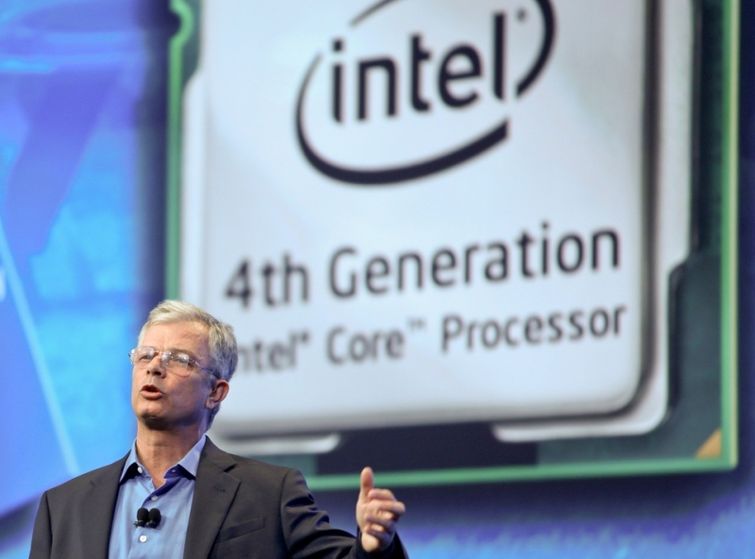Intel Haswell: Ivy Bridge's successor explained
Intel's leap from Ivy Bridge to Haswell isn't staggering, but the new platform is a challenge to rivals

What is Haswell?
As the successor to Ivy Bridge, Intel Haswell is the 4th Generation Intel Core offering lower power consumption and improved built-in graphics. The new CPU also matches a new z87 chipsets and socket type in the LGA1150 also called H3. Unfortunately, this means that existing boards can’t accept a straight upgrade but the new socket will support the next generation of Intel Broadwell chip. Haswell chips still use the i3, i5 and i7 identifies but switch to a -4 product identifies such as the top end Core i7-4950HQ processor. In May 2014, Intel announced it is planning to launch Haswell-E, an update to its enthusiast platform offering eight cores and 16 threads and support for faster DDR4 memory. The E variant is likely to ship in Q3 of 2014.
Who is it aimed at?
Haswell’s big pitch is at lower power consumption and more capability built into the chip. This targets hybrid tablet manufacturers and low power servers in particular, but also provides a logical progression for the lacklustre desktop market.
Unlike the move to Sandy Bridge, the leap from Ivy Bridge to Haswell is not as staggering, but the new platform’s power profile offers the possibility of new performance levels for near silent devices. However, in terms of sheer performance increase in Windows, the Haswell family offers barely 10 percent increase over previous generation chips which make it an unlikely upgrade from enthusiast systems currently on Ivy Bridge.
How does it impact the market?
Intel’s dominance in the server market is estimated at 96 percent, according to data from Mercury Research - however in the tablet, smartphone and appliance markets rivals ARM and Qualcomm are leaders. As shipments in PCs slow, it is clear that Intel is aligning itself to a low power mantra.
ChannelPro Newsletter
Stay up to date with the latest Channel industry news and analysis with our twice-weekly newsletter
With Haswell chips, especially the high-end ‘HQ’ variants that support its latest Iris Pro graphics solution, Intel probably has the most powerful single CPU solution at the lowest energy per unit of compute.
However, the 22nm process and heavy on-chip integration comes at a price. Rivals like AMD’s older A-Series might be less elegant but they have a budget price tag with decent ATI based graphic delivering a lot of ‘bang for the buck’ when it comes to areas like gaming. For a sub £300 PC, Haswell is simply a non-starter. Although Broadwell is the next Intel chip evolution, it’s impact will be muted due to a 22nm process although 2015 will see the arrival of Skylake, an Intel processor microarchitecture that will use a 14 nm manufacturing process.
Points of interest
Haswell is an on-going evolution of Intel’s roadmap and arrives as planned. In the background, Intel is transitioning some of its business focus. In January, it confirmed it plans to phase out manufacturing of own-brand motherboards for the traditional desktop market. Haswell will be the last processor family to receive Intel-branded desktop boards. This is no loss as it could be argued that rival vendors such as Gigabyte, Asus and MSI are all offering better value alternatives. However, Intel has committed to server boards that have proved popular with system integrators stating that “it will be maintaining its server motherboard and server systems,” through its Enterprise Platforms and Services Division (EPSD).
Channel Pro opinion
With the arrival of Haswell, it’s clear that Intel is positioning itself against rivals with a CPU and chipset that moves it along the path to energy efficiency.
The price differential at the moment is still leading edge but until the arrival of AMD Bulldozer server chips, Intel has the most powerful chip at its price point. Haswell is not a game changer but expect to see a whole host of hybrid laptop-tablets that claim desktop power and extended battery life that outstrips current Intel platforms.
With the vendor claiming sub 10w at idle power consumption and a host of subtle technical improvements to drive down power consumption, an argument for Haswell as datacentre benchmark server becomes more compelling.
-
 Cleo attack victim list grows as Hertz confirms customer data stolen
Cleo attack victim list grows as Hertz confirms customer data stolenNews Hertz has confirmed it suffered a data breach as a result of the Cleo zero-day vulnerability in late 2024, with the car rental giant warning that customer data was stolen.
By Ross Kelly
-
 Lateral moves in tech: Why leaders should support employee mobility
Lateral moves in tech: Why leaders should support employee mobilityIn-depth Encouraging staff to switch roles can have long-term benefits for skills in the tech sector
By Keri Allan